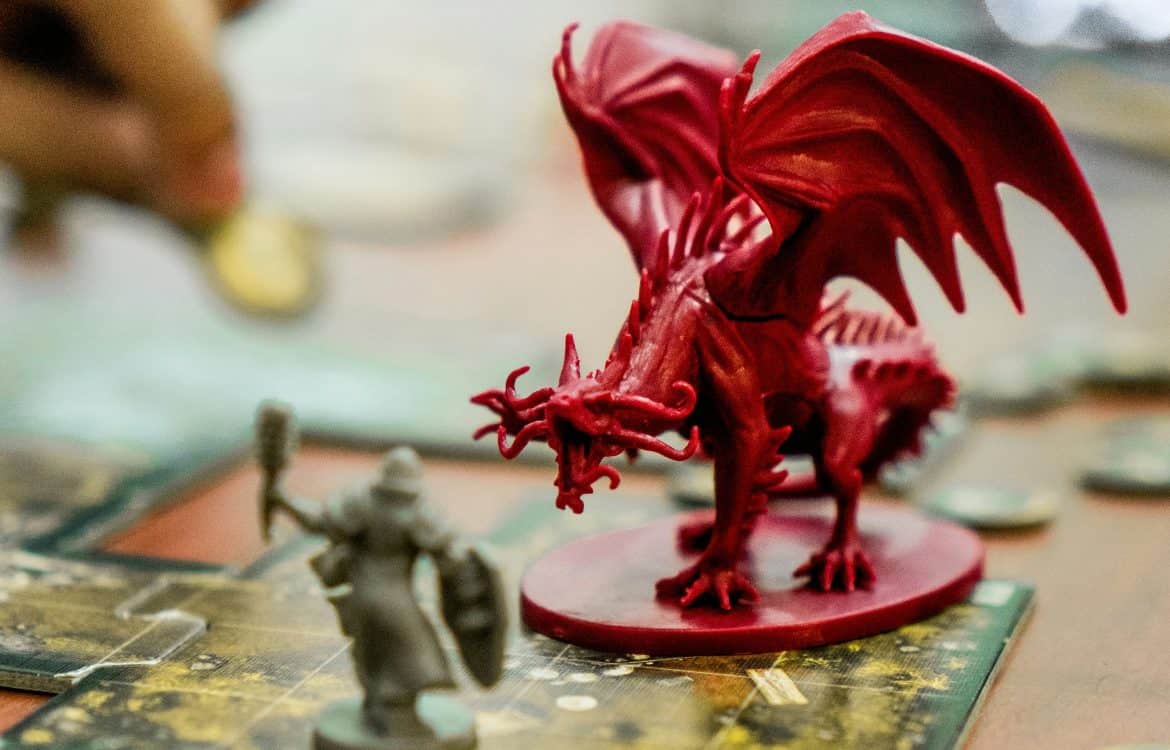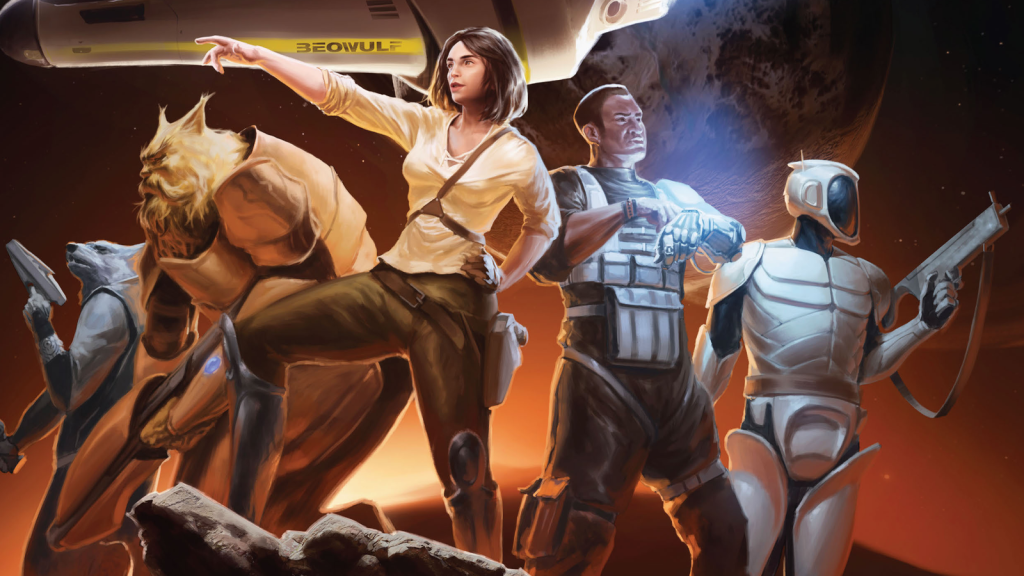
The Titans of Tabletop: 10 Legacy RPGs That Shaped the Industry
The tabletop role-playing game (TTRPG) industry is filled with a diverse array of systems, settings, and mechanics, but every game today owes something to the giants that came before. These ten legendary RPGs laid the foundation for the modern role-playing experience, introducing key mechanics, immersive storytelling, and groundbreaking innovations that still influence game design today.
1. Dungeons & Dragons – 1974
It all began here. Created by Gary Gygax and Dave Arneson, Dungeons & Dragons (D&D) introduced the concept of role-playing in a fantasy setting. Its class-based progression, party dynamics, and dungeon-crawling adventures became the blueprint for countless games. While the early editions focused on tactical combat and exploration, later versions—especially the popular 5th Edition—shifted toward accessibility and storytelling, making it a favorite for both newcomers and veteran players.

D&D appeals to a broad audience. Tactical players enjoy the strategic combat and character customization, while roleplayers revel in the collaborative storytelling and world-building. Dungeon Masters have near limitless creative freedom, allowing them to craft their own worlds or draw from pre-made campaign settings. Whether you’re interested in deep lore, power gaming, or improvisational storytelling, D&D offers something for everyone.
2. Call of Cthulhu – 1981
Where D&D focused on heroic fantasy, Call of Cthulhu (CoC) took players into the realm of cosmic horror. Inspired by H.P. Lovecraft’s works, this game introduced investigative gameplay and the infamous sanity mechanic, forcing players to balance knowledge with madness. Unlike many RPGs where characters become more powerful over time, Call of Cthulhu embraces vulnerability—characters are often scholars, detectives, and journalists who risk their sanity to uncover hidden horrors.
This game is perfect for players who enjoy suspense, mystery, and atmospheric storytelling. Instead of hacking and slashing through enemies, players must piece together clues, research ancient texts, and outwit cultists and eldritch beings. It’s a favorite among fans of horror fiction and those who enjoy slow-burn tension and psychological thrills.
3. Shadowrun – 1989
A fusion of cyberpunk and fantasy, Shadowrun blended futuristic technology, megacorporations, and magic in a dystopian world. It was one of the first games to mix genres so seamlessly, allowing players to be hackers, mercenaries, shamans, and elves in a cyberpunk setting. The setting’s signature style—where neon-lit cities are teeming with cyber-enhanced mercenaries and spellcasters—set it apart from both traditional fantasy and pure sci-fi RPGs.

Players who love tactical combat, cyberpunk aesthetics, and deep character customization are drawn to Shadowrun. The game offers complex mechanics for hacking, cybernetic enhancements, and spellcasting, making it a great fit for players who enjoy crunch-heavy systems. The setting’s blend of corporate intrigue, high-stakes heists, and street-level survival makes it a fantastic choice for fans of Blade Runner, Neuromancer, and urban fantasy.
4. Vampire: The Masquerade – 1991
With its emphasis on personal horror, political intrigue, and deep storytelling, Vampire: The Masquerade (VtM) redefined what an RPG could be. Unlike traditional level-based progression, it focused on roleplaying, social maneuvering, and moral dilemmas, giving rise to the “storytelling RPG” genre. The game’s setting—the World of Darkness—is a gothic, urban horror landscape where vampires manipulate mortal society from the shadows.

Vampire: The Masquerade attracts players who enjoy character-driven stories, deep roleplaying, and morally ambiguous choices. Instead of dungeon crawls, the game revolves around personal conflicts, power struggles, and maintaining the fragile balance between one’s monstrous nature and humanity. Fans of dark, immersive storytelling and political drama will find this game endlessly engaging.
5. Traveller – 1977
One of the first sci-fi RPGs, Traveller offered deep space exploration, trade, and political intrigue. Known for its unique character creation system (where a character could die before gameplay even started), Traveller was a trailblazer in sandbox-style gaming, paving the way for modern open-world RPGs. Unlike many RPGs that revolve around combat, Traveller encourages problem-solving, diplomacy, and exploration.

Players who enjoy open-ended campaigns and realistic sci-fi settings will appreciate Traveller. It’s ideal for fans of The Expanse, Firefly, and classic space operas. The game’s freeform nature allows for expansive, player-driven stories, making it a great choice for groups that love detailed world-building and strategic gameplay.
6. GURPS (Generic Universal RolePlaying System) – 1986
Designed by Steve Jackson, GURPS was one of the first universal RPG systems, allowing players to use a single set of mechanics across multiple settings. Whether medieval fantasy, sci-fi, or superheroes, GURPS proved that a well-designed system could support any story. Its modular approach to character creation influenced later systems like FATE and Savage Worlds.
GURPS is a favorite among players who love detailed customization and flexible rulesets. It’s a great choice for those who want to create their own worlds or adapt their favorite fictional universes into a game. While the system can be complex, its depth allows for unparalleled freedom in storytelling and gameplay.
7. Warhammer Fantasy Roleplay – 1986
Set in the grim and perilous Warhammer universe, this RPG emphasized brutal combat, career-based character progression, and a dark, immersive world. It was one of the first games to introduce a setting where characters were often struggling against overwhelming odds, a theme that remains popular in many RPGs today.

This game is perfect for players who enjoy dark fantasy, gritty realism, and tactical combat. Warhammer Fantasy Roleplay embraces themes of corruption, chaos, and societal decay, making it an excellent fit for those who enjoy challenging, high-stakes narratives.
8. RuneQuest – 1978
Unlike D&D’s level-based system, RuneQuest pioneered skill-based character progression and introduced the richly detailed world of Glorantha. Its mechanics heavily influenced percentile-based RPGs and its deep lore created a model for immersive world-building in later games.

Players who enjoy mythology, skill-based progression, and rich, pre-built settings will love RuneQuest. The game’s focus on cultural depth and personal development makes it ideal for roleplayers looking for something more intricate than traditional fantasy RPGs.
9. Legend of the Five Rings – 1995
Inspired by feudal Japan, Legend of the Five Rings (L5R) blended samurai drama, political intrigue, and mystical elements. Its unique dice mechanics and “honor versus duty” themes made it a standout game. L5R proved that RPGs could explore cultural themes in deep and meaningful ways, influencing narrative-focused RPGs for years to come.

This game is a must-play for fans of samurai epics, tactical dueling, and deep roleplaying. The tension between personal desires and societal expectations makes every decision meaningful, appealing to those who enjoy narrative-driven games.
10. Palladium RPGs (Rifts, Heroes Unlimited, TMNT RPG) – 1981
Palladium Games created several influential RPGs with their Megaversal system, blending different genres in ways that predated modern cross-genre RPGs. Rifts in particular became famous for its mix of magic, technology, and interdimensional warfare, demonstrating the potential for limitless storytelling in tabletop RPGs. Other games like Heroes Unlimited allowed players to embody superheroes, while the Teenage Mutant Ninja Turtles RPG brought an unexpected twist by giving players the chance to roleplay as mutant heroes.

Palladium’s RPGs are perfect for players who love over-the-top action, wild settings, and deep character customization. They offer an unmatched level of creative freedom, making them great for those who want a kitchen-sink approach to world-building and gameplay. Whether you’re navigating the chaotic, multi-dimensional battles of Rifts or donning a cape in Heroes Unlimited, Palladium’s games cater to those who enjoy fast-paced action, unconventional settings, and a huge variety of narrative possibilities.
What if I want something fresh?
Many players will find something they love in these legacy RPGs, as they offer diverse experiences and have influenced countless modern games. However, they are just the tip of the iceberg.
If you’re looking for something beyond the classics, stay tuned to this blog—we’ll be exploring a vast array of other incredible TTRPGs that might be your next favorite.
Archives
Calendar
| M | T | W | T | F | S | S |
|---|---|---|---|---|---|---|
| 1 | 2 | |||||
| 3 | 4 | 5 | 6 | 7 | 8 | 9 |
| 10 | 11 | 12 | 13 | 14 | 15 | 16 |
| 17 | 18 | 19 | 20 | 21 | 22 | 23 |
| 24 | 25 | 26 | 27 | 28 | 29 | 30 |
| 31 | ||||||
Leave a Reply